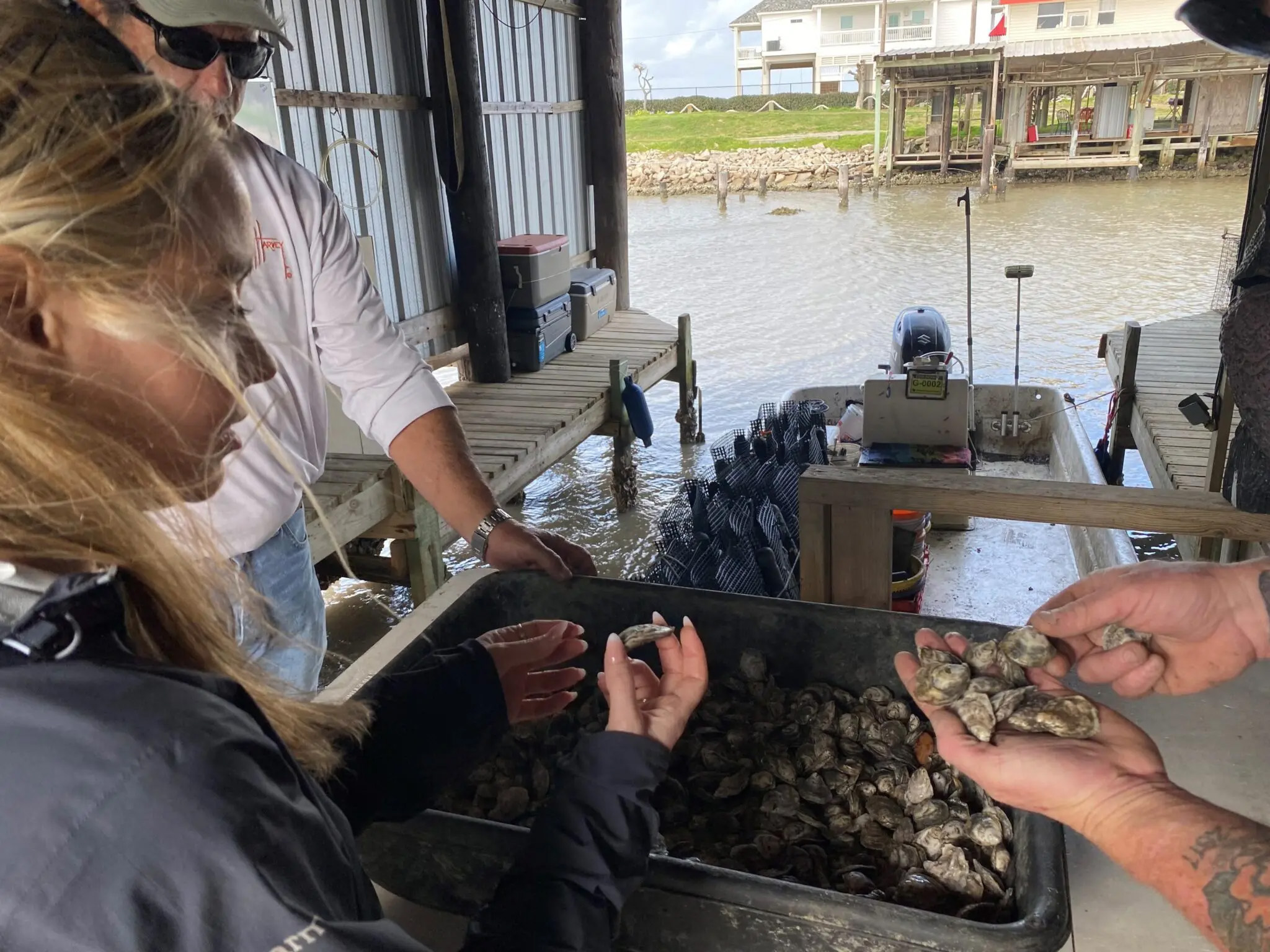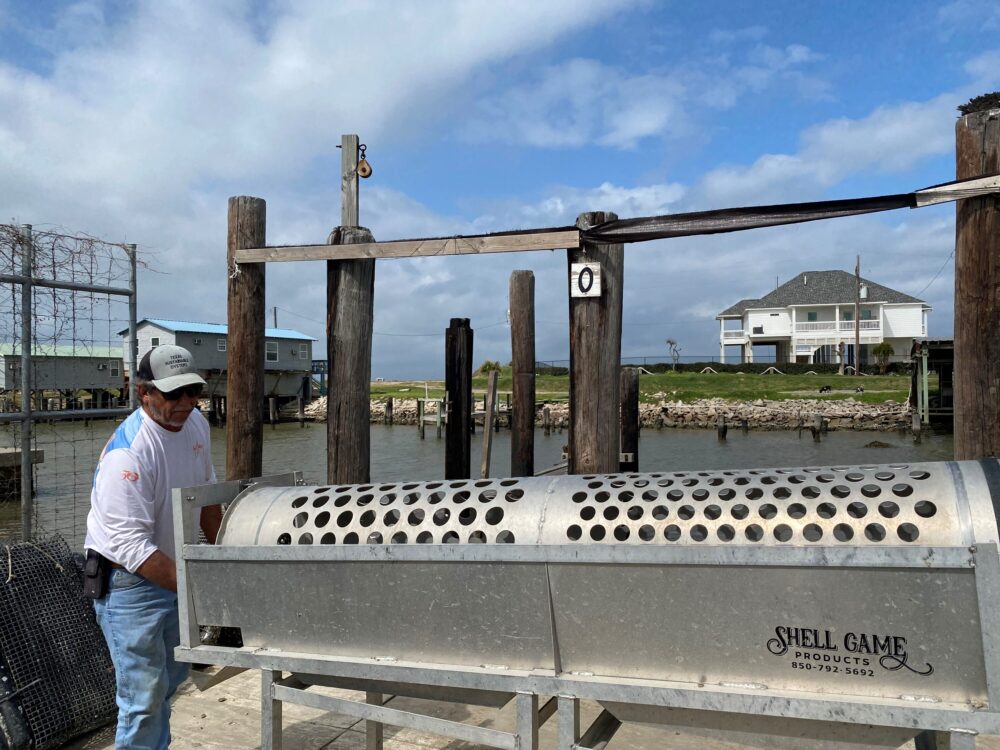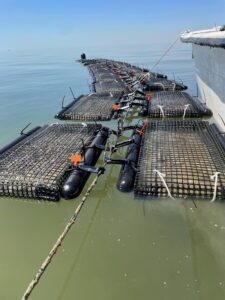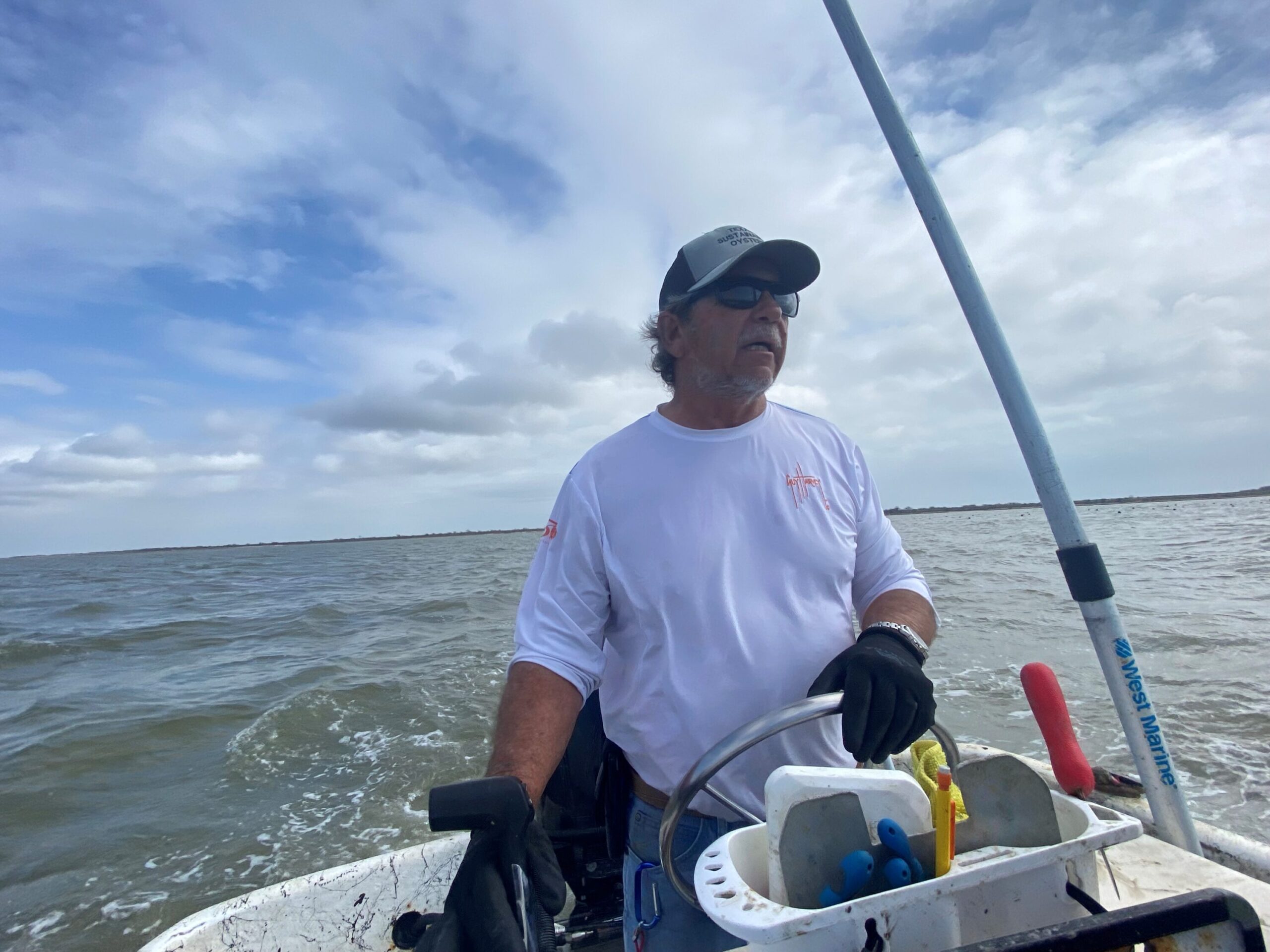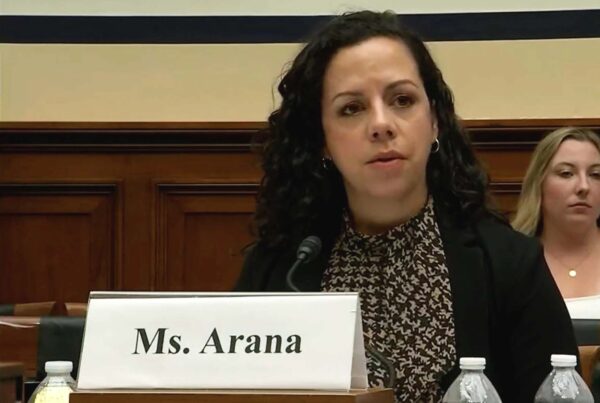About a mile off Bolivar Peninsula, near Goat Island, black mesh bags full of oysters from a local oyster farm bob on the waves. From far away, they look like a flock of birds. Commenters on Facebook had some different ideas when they first were installed, according to farm founder Hannah Kaplan.
“It’s an alien landing site, it’s the CIA doing secret research, or it’s a trap for your boats or something like that,” she said. “People were very interested in what was going on.”
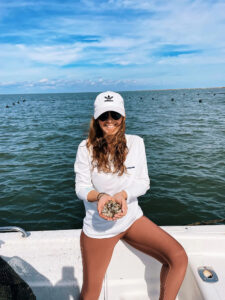
Hannah Kaplan at her oyster farm off Bolivar Peninsula.
Courtesy of Barrier Beauties
Kaplan is the founder of Barrier Beauties, the second permitted oyster farm in the state. In 2019, Texas became one of the last coastal states in the US to allow oyster mariculture. More than three years later, the first farms have had their initial harvests, and interest in the industry is growing.
This growth in the state’s oyster farming industry comes as wild Texas oysters have fared poorly over the past decade, suffering from drought, flood events and hurricanes. Currently, the majority of reefs are already closed to harvesting – even though the wild oyster season is supposed to stay open through April.
While farmed oysters wouldn’t replace wild oysters, experts say they could help relieve some of the harvesting pressure or provide a different option for oyster harvesters who find themselves out of work.
“I think oyster farming is one tool in the toolbox when it comes to how to create a more sustainable oyster industry in Texas,” said Lauren Williams, the Nature Conservancy’s Resilient Coast Program Director for Texas.
Williams said farmed oysters can provide some of the same natural benefits as wild oysters, such as improving water quality.
“There are studies that have shown that in some areas where you have oyster aquaculture, there are sea grasses that have come back in adjacent areas because the water clarity has improved,” Williams said. “So mariculture oysters definitely provide some of those same services as wild oysters.”
Not all oysters are alike
In terms of harvesting, however, farmed oysters tend to go to a specific market.
“Oysters that are mariculture tend to just be prettier, and so they’re more desirable for the half shell market,” said Williams.
Part of the reason is because of the farming practices in place, according to Kaplan, the founder of Barrier Beauties.


